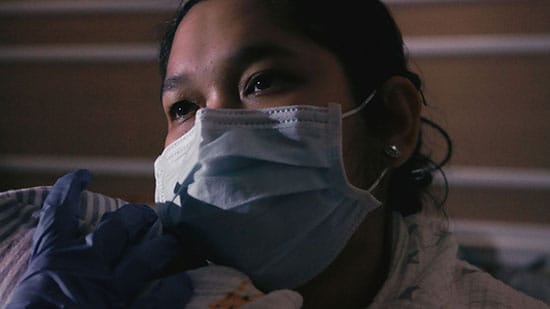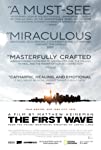Eye For Film >> Movies >> The First Wave (2021) Film Review
The First Wave
Reviewed by: Jennie Kermode

There’s no shortage of documentaries about Covid-19 around at the moment. Whilst some people may feel that it’s far too soon for them to want to watch something like that, with the pandemic still ongoing, these films do have a role to play in the process of investigation and analysis which helps us to identify errors and improve our response. Produced by National Geographic, The First Wave is not the strongest of the bunch but does have specificity on its side, as rather than trying to take on the whole topic, it focuses on what happened when the virus reached New York City.
Lasting roughly from 8 March until 1 July, the first wave impacted the city like nothing in living memory. Over 30,000 people were infected in the first three weeks alone, with poor areas particularly hard hit, and by early April some 2,000 people had died from it. Bodies were being placed in cold storage as the city actually ran out of coffins. Before any clear advice was available about how to reduce risk, people on the metro were covering their faces with scarves and hoping for the best.
There is little in Matthew Heineman’s film addressing the existential panic this created. Purely from a safety point of view, it would have been difficult to film in the areas most severely affected, but this also seems to be a stylistic choice. Heineman is careful not to bludgeon viewers with the horror of it all, understanding that occasional powerful moments – such as a nurse apologising as she breaks down, overwhelmed by feelings of hopelessness after the death of yet another patient – make more of an impression than the depiction of constant, generalised suffering.
The bulk of the film is focused on a single hospital, and it humanises the issues at hand by following the personal stories of several patients whose illness is so severe that they have to be intubated. Heineman doesn’t intrude on the most distressing parts of this process but shows us just enough to communicate how unpleasant it can be, as well as making us privy to discussion about how the patients need to be sedated to help them endure the long days spent in that position. Naturally the intubated patients themselves are unable to speak, but we hear from their worried family members, who use Facetime to talk to them through mobile phones held up by the staff. Blinking and hand gestures which clearly take a lot of physical effort are the last communication that some of these patients will ever have with their loved ones.
Not everybody makes it. Perhaps more important to see is what happens to those who do. Nobody is walking out of the hospital in the same shape they were in before. Some, despite having been young, healthy and able-bodied before the infection struck, are not walking at all. Breathing is hard. Speaking is hard. Well-meaning friends have planned socially-distanced celebrations but really, what these survivors need most is to sleep, and there’s no knowing how long they will remain that way.
Alongside the patients, we get to know the hospital staff. There’s little formality about this. Thoughts are expressed in hurried bursts in corridors. We get hints of who these people were before all this, reflections on how they have changed. Every one of them is exhausted. They’re afraid for their own lives, especially as they have lost colleagues, but still they go to work every day and do their jobs. It’s not so much a conscious heroism as a reflex action – because they are needed and because they simply don’t know what else to do.
The First Wave largely avoids the politics of it all. One wonders if it might have been edgier if National Geographic had not lost its independence. Nonetheless, it sends a powerful message. It’s a tribute to the courage of all those who stayed the course and a reminder of how much is still at stake.
Reviewed on: 03 Dec 2021

















